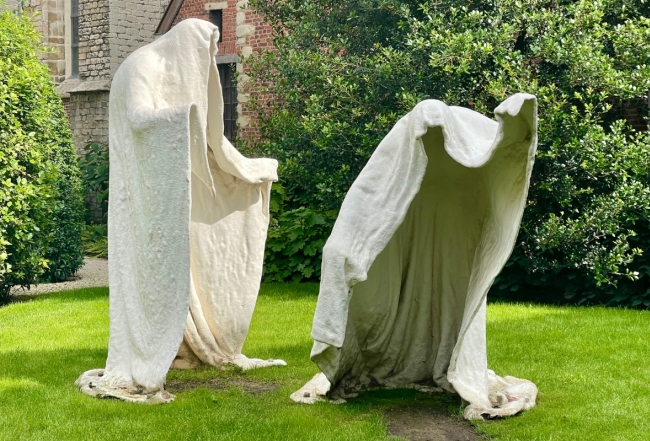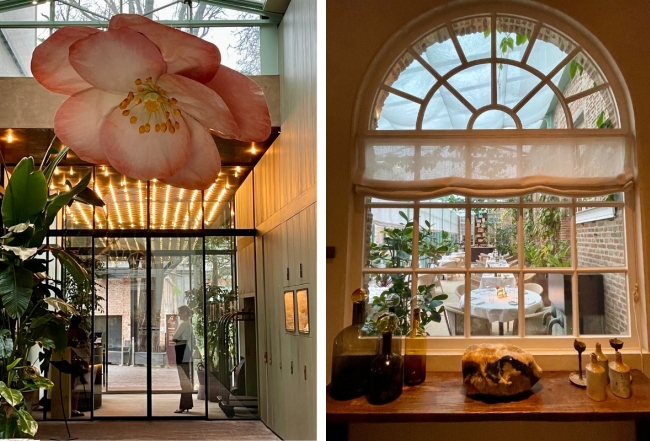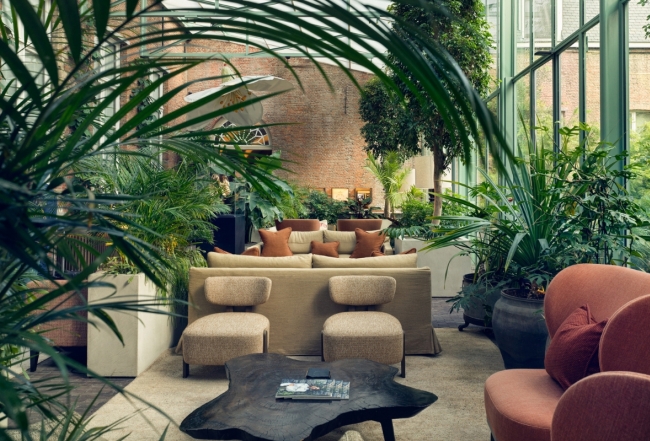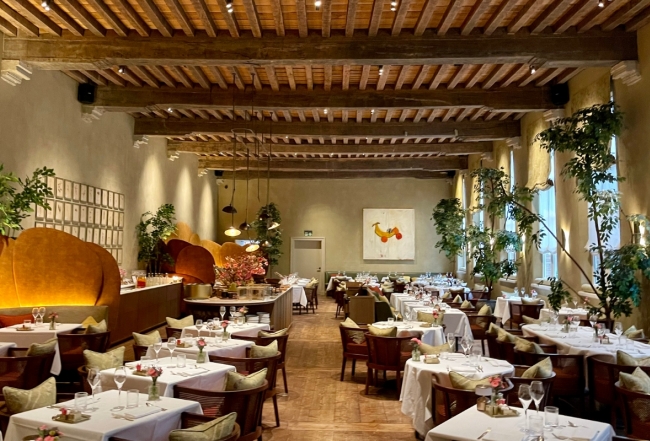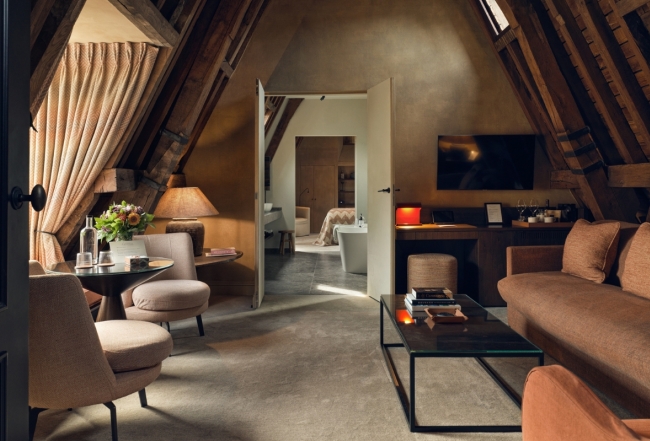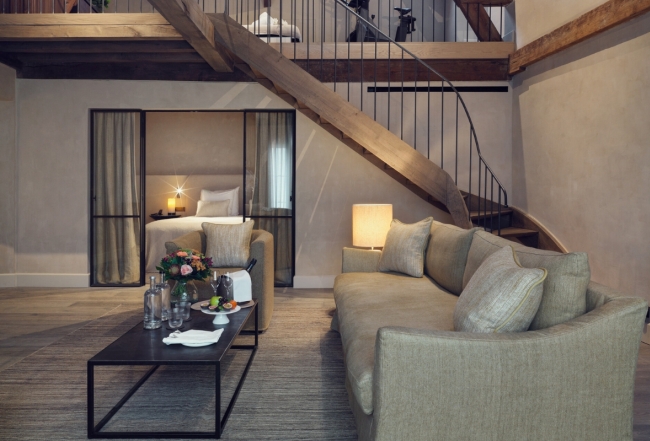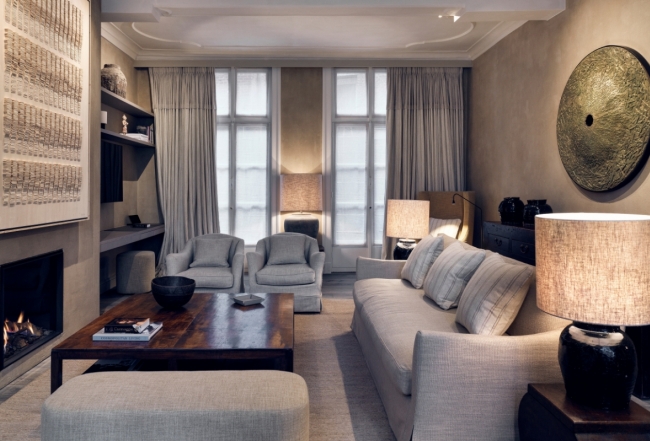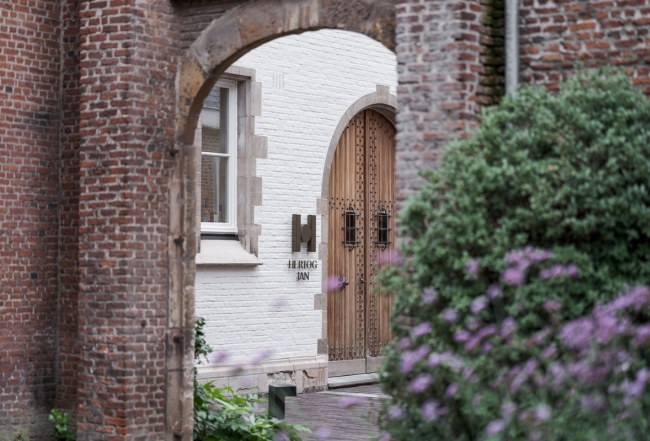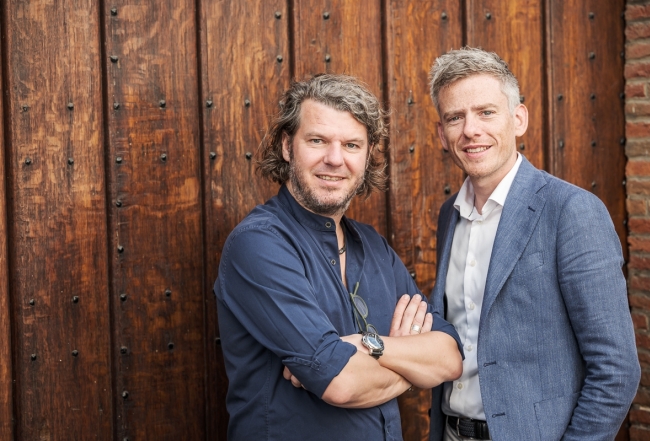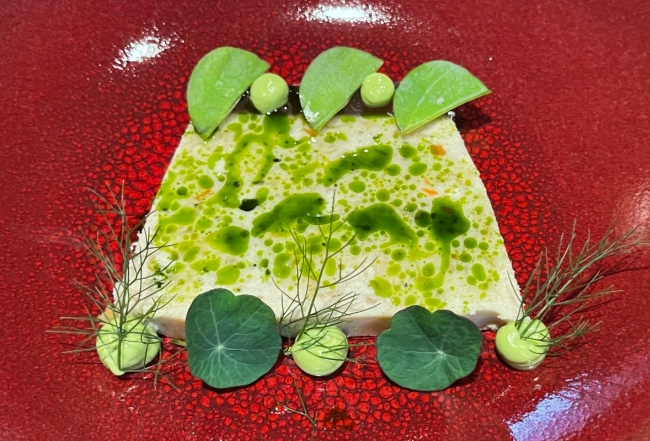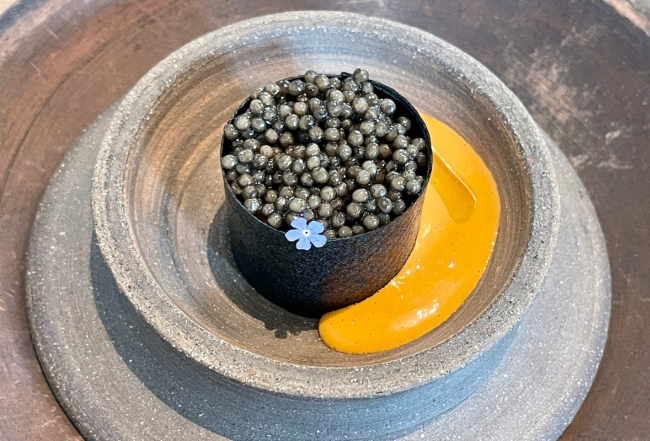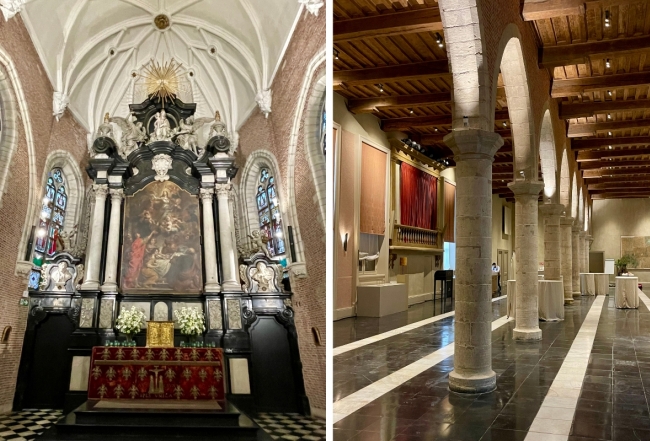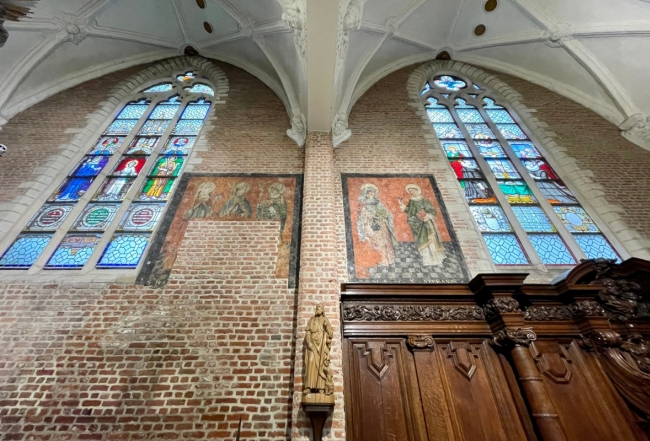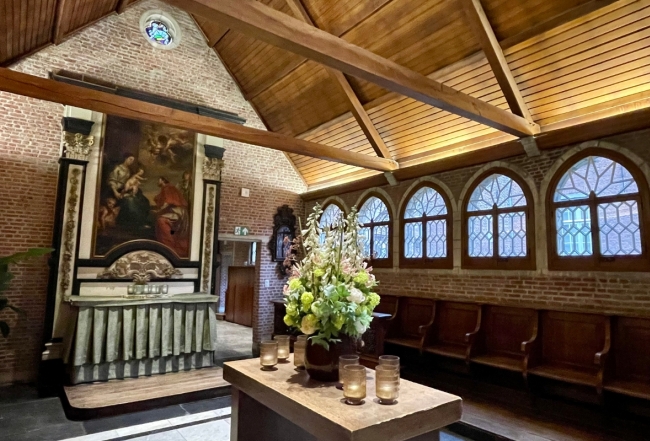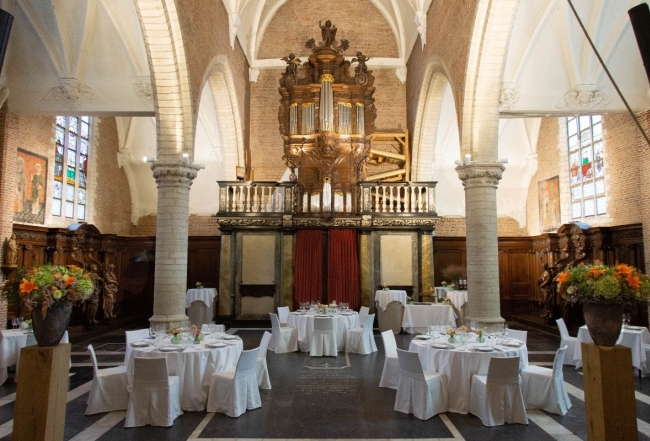Belgium’s Rare Flower: Botanic Santuary Antwerp
“Culinary travel is something that everyone is talking about so lots of people are passionate about our destination,” says General Manager Christian Hirt, referring to the exceptional gourmet offerings at Botanic Sanctuary Antwerp.
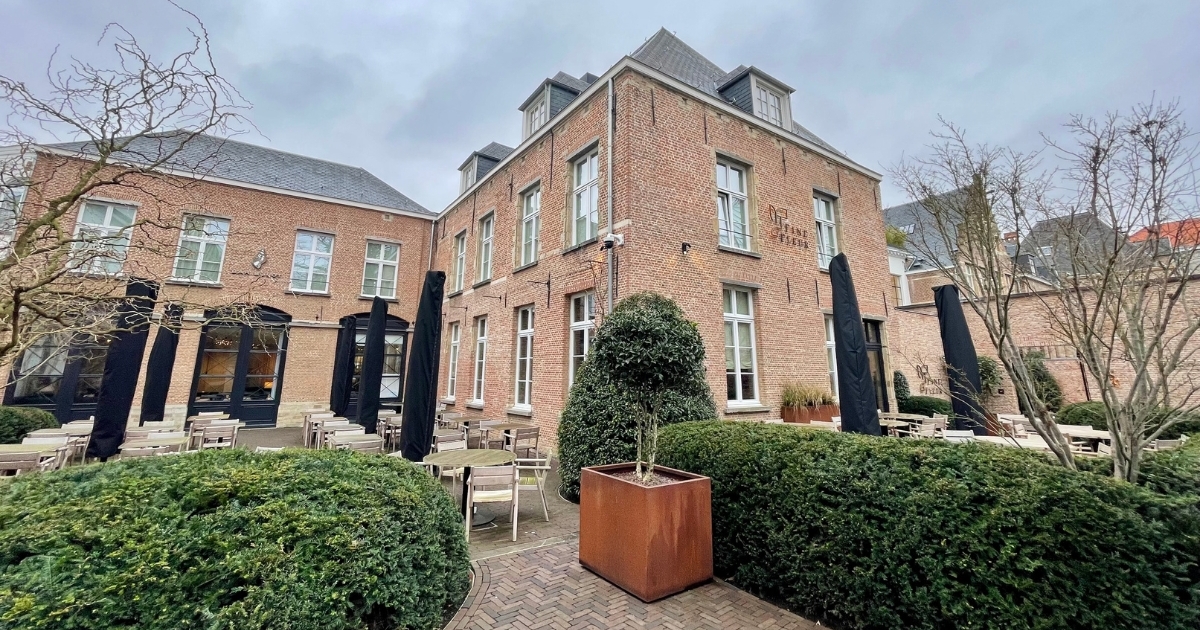
Like the giant, decorative camellias hanging from its lobby ceiling, the award-winning Botanic Sanctuary Antwerp hotel is extraordinary, distinctive and artful. One of only a handful of 5-star superior hotels in Belgium, it is also among the 450 Leading Hotels of the World. Like so many things in this country, the Botanic Sanctuary was built from centuries of heritage and showcases gastronomy. Intertwined, as its name suggests, is the beautiful and soothing world of plants.
From Monastery to Sanctuary
In 1238, an order of monks set up a monastery and hospital (St. Elisabeth) on the site of today’s Botanic Sanctuary. Over the next seven centuries, an infirmary, chapel, apothecary, medicinal garden, hospital wing and more buildings were added. Fast forward to the mid-20th century, the botanical garden became protected by the city of Antwerp and a three-star hotel and congress centre occupied some of the historic buildings until the city took over the whole property in 2018.
This created an opportunity for renown local real estate developer Eric De Vocht, founder of IRET Development, who wanted to preserve and honour the historical site. He took out a 99-year lease from the city on the 20,000 square metres containing all of the historic buildings. Five years later, they were restored to house a luxury hotel, event spaces, modern apothecary and fine art gallery. New buildings were added for a three-story spa and three independent restaurants. (The enclosed Antwerp Botanical Garden remains public property.) In the summer of 2023, the Botanic Sanctuary fully opened as Antwerp’s first five-star hotel, putting itself and the city on the world map.
“The city was absolutely in need of a hotel like ours,” says General Manager Christian Hirt. “With the Botanic Sanctuary, I found something that's truly special [but] it’s not as known as it could be. I’d love to take this beautiful property and position it internationally.
“Travelers are looking for new destinations in Europe. It's not only about Italy, Paris and London anymore … and we [Antwerp and the Botanic Sanctuary] are a great destination.”
The Botanic Sanctuary offers 108 rooms and suites in historic buildings, a 14-room conference centre for up to 350 people, 500 parking places (half for event guests), five gourmet restaurants with a culinary garden and greenhouse, a restored 19th century apothecary and a 15th century chapel with stained glass windows as an exquisite event space. Everything is “coming up roses” at the hotel with its botanical theme tastefully incorporated into décor and gastronomy.
Its interior, influenced by De Vocht’s wife, Maryse Odeurs, includes natural materials like stone, wood, glass and silk, linen and wool. Fifty shades of green dominate, accented with earth tones and bright, colourful flowers. For instance, the hotel lobby is like a temperature-controlled greenhouse with a wall and ceiling made of glass panels, decorative pink and white camellias hovering above, and dozens of real plants covering the floor. Staff wear green and taupe clothes that blend with the ambiance.
“This is a standalone hotel without chain rules,” says Sandrine Versavel, director of sales and marketing. “It has the freedom to have a personal touch, such as artwork from the private collection of the owners. It’s like a boutique hotel but large … a hidden gem in a less crowded European city [that’s] great price quality compared to Paris.”
Gastronomy and Botany
Beyond its unusual, stunning appearance, the Botanic Sanctuary is a rare gastronomy hub with three Michelin-starred restaurants plus others of distinction on site:
Hertog Jan: With two Michelin-stars, this gastronomic delight offers Japanese-inspired, flavourful cuisine made of 90 percent Belgian ingredients, including those from its own greenhouse, herb garden and beehives. Open only 10 days a month for just 24 diners, it provides an intimate experience with famous Flemish chef Gert De Mangeleer, who cooks himself, visits with guests and invites them into his kitchen.
As an ambassador for Royal Belgian Caviar, he acquires fresh fish eggs and salts them himself using a special Japanese technique. “I have a very strong identity in my cuisine, [largely] because I never worked for a renowned chef,” says De Mangeleer. “I really [put my] soul into this restaurant and into the cuisine … we designed everything ourselves from the beginning to end.”
Fine Fleur: Meaning “Fine Flower” in French, this charming one-Michelin-star fine dining restaurant features light, world cuisine with a lot of locally grown vegetables, vinaigrettes and sauces by Dutch chefs Thomas Diepersloot and Jacob Jan Boerma. It has an open kitchen with a four-seat “chef’s counter” (must be booked at least two months in advance) and just 12 tables for 24-30 guests. “Our cuisine is modern [with] flavours and preparations from around the world,” says “The restaurant has “a house feeling … comfortable [and] a little bit rock and roll.”
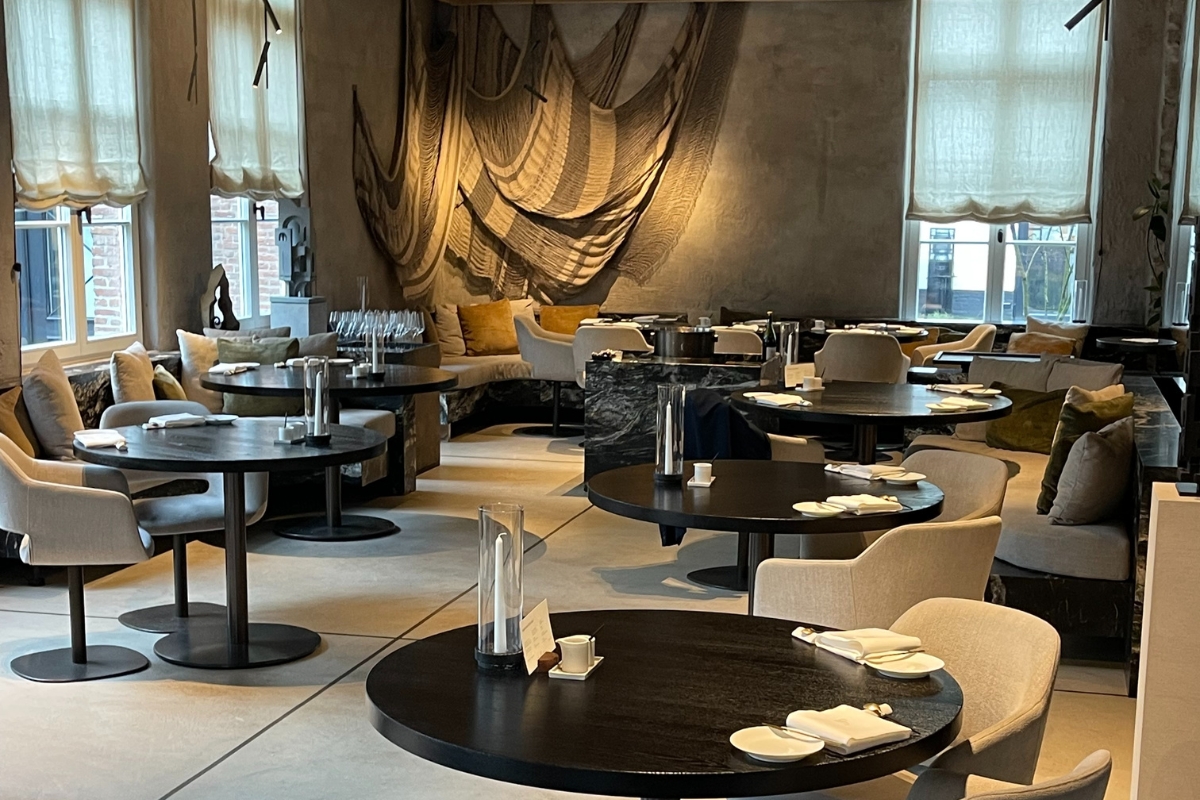
Het Gebaar: This one-Michelin-star “gingerbread house” overlooking the Antwerp Botanical Garden, formerly St. Elisabeth hospital’s apothecary, is open for lunch and dessert on weekdays. Acclaimed Dutch Chef Roger van Damme, named the World’s Best Pastry Chef in 2017, offers savoury and sweet treats from classic Beef Wellington to innovative Cocoa Bean (a signature dessert using the latest patisserie techniques).
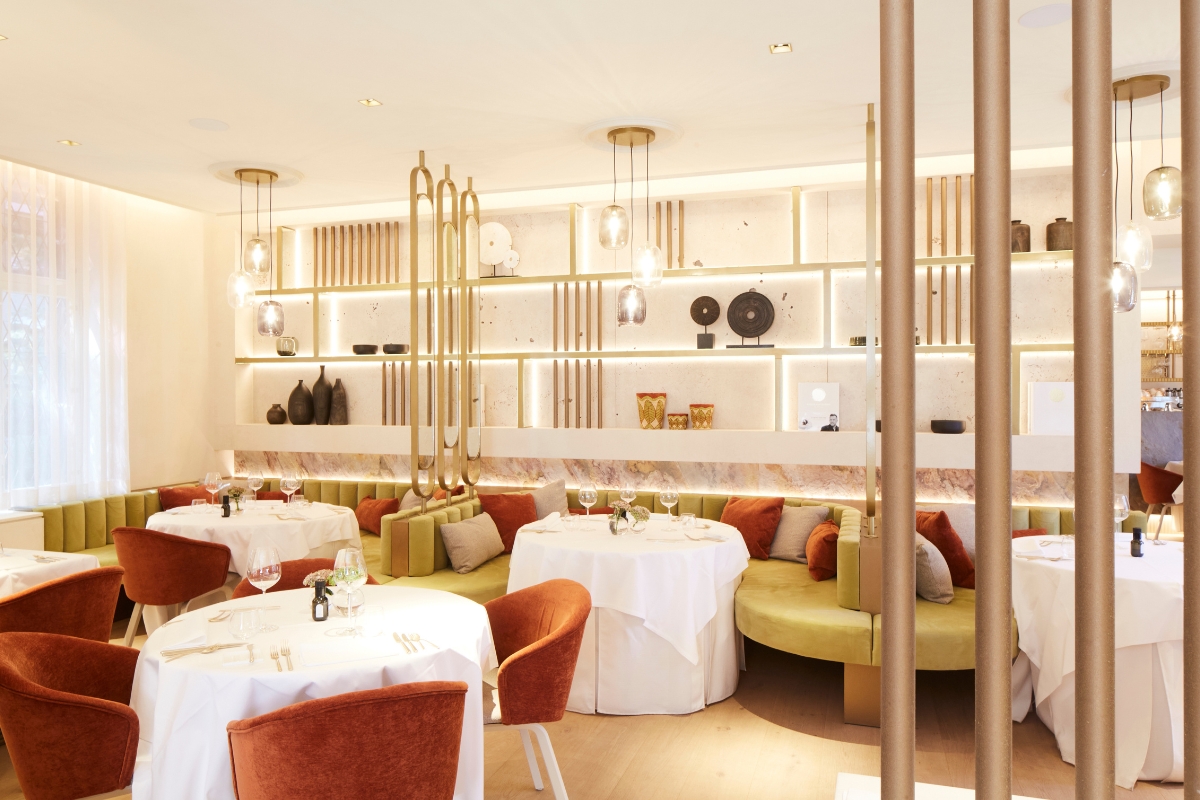
Bar Bulot: Another of De Mangeleer’s restaurants, this brasserie offers classic Belgian-French cuisine, such as shrimp croquettes and vol au vent, plus seasonal specialties like hop shoots and white asparagus. Deemed “honest cooking” with an à la carte menu, Bar Bulot shares Hertog Jan’s greenhouse and garden with fresh herbs and edible flowers.
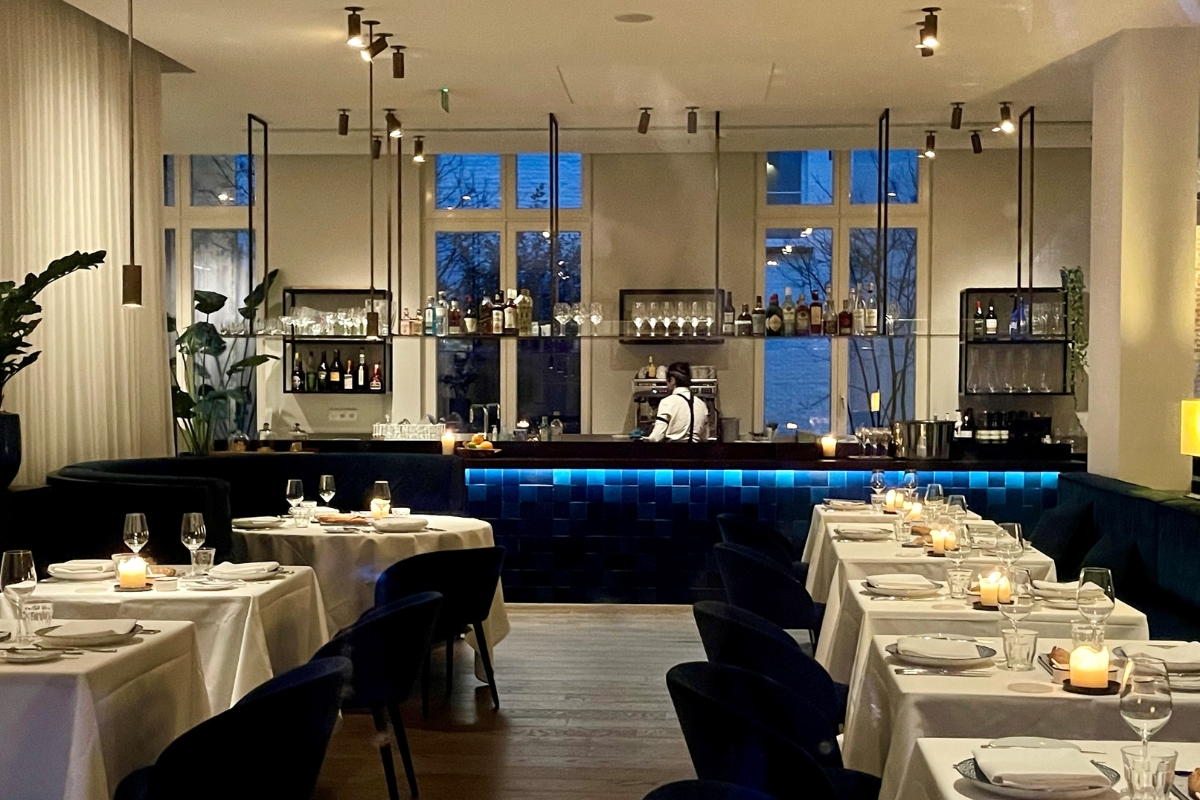
Henri’s Bar & Bistro: The elegant hotel bar, including two back rooms, adjacent greenhouse-style bistro and seasonal garden terrace serve gourmet bevvies and bites with an international flair. Drinks and dishes are prepared with top ingredients, often garnished with homegrown flowers or leaves. The bar is filled with striking modern artworks and colourful furniture. The bisto is light and airy with vines hanging from its glass roof and wall.

In its Catalpa Room, adorned with antique botanical illustrations, the Botanic Sanctuary offers a sumptuous breakfast buffet featuring Belgian products from seafood to charcuterie, cheese and artisanal bread. On Sundays and special occasions, an indulgent brunch is served in the same space with multiple courses, wine pairings and live music.
“Such a great gourmet offering… is absolutely unique,” says Hirt. “There are not many hotels in Europe that can offer this … Culinary travel is something that everyone is talking about [so] lots of people are passionate about our destination.”
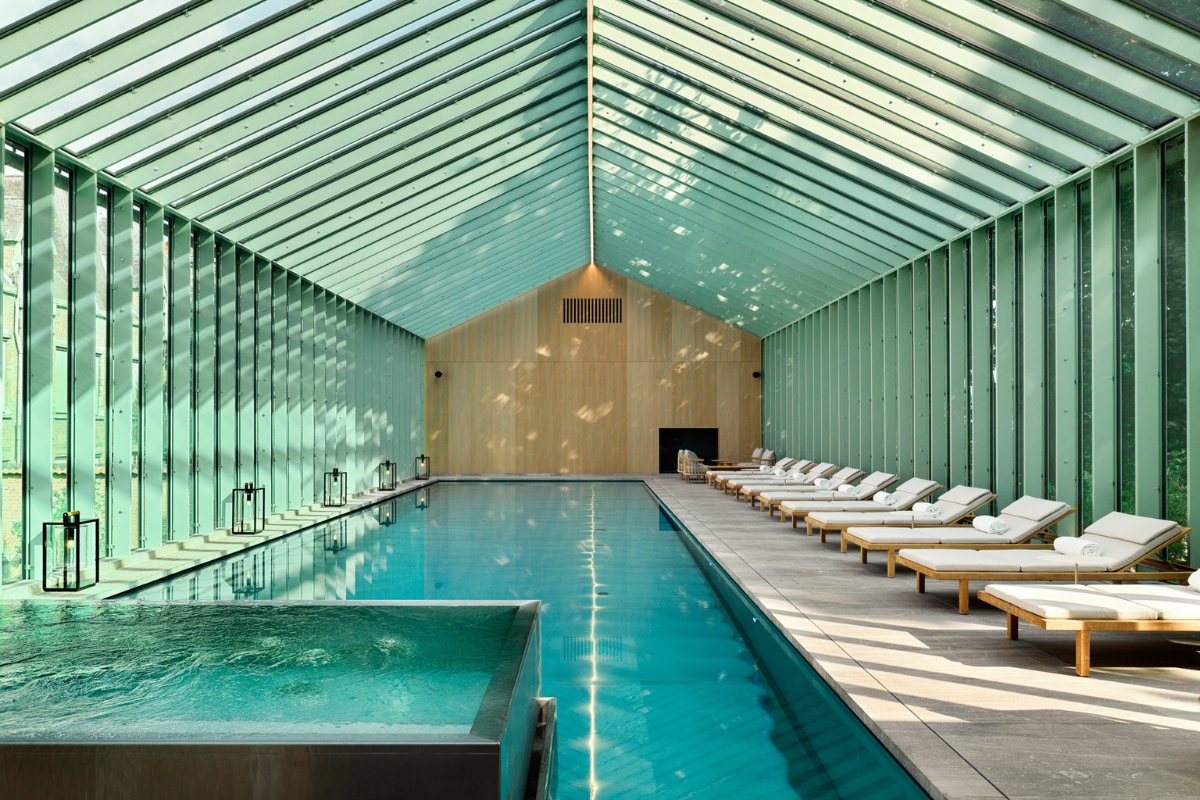
Natural Resources
A luxury spa offers guests holistic “healing” on the former hospital site. This sanctuary of peace incorporates an old brick wall of a former orangery in a greenhouse-like building made of glass, wood and stone. It has 10 treatment rooms, an indoor swimming pool, infinity whirlpool, sauna, steam bath, bistro and 24/7 health club.
“There are lots of great spas and Michelin restaurants in the world but here, they all are under one roof in the city centre,” notes Versavel.
In the restored Victorian-era apothecary, including original cabinets and fittings, is Saint Charles Apothecary. It sells botanical personal products, including those custom-made for the spa and guest rooms, as well as herbal remedies and aromatherapy items. The products are made by Saint Charles Apothecary, a six-generation, Austrian company that uses all plant-based ingredients. It even created a unique fragrance for the Botanic Sanctuary, which can be purchased as a spray.
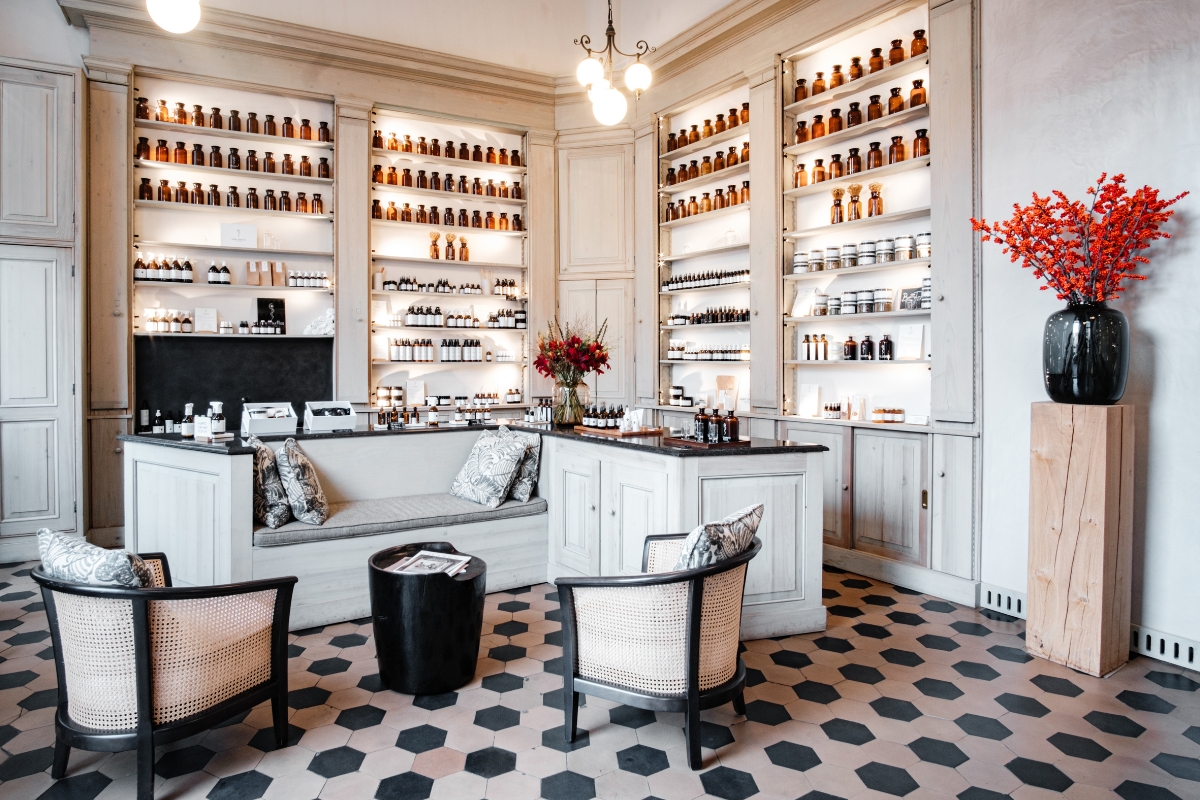
Next to Saint Charles is the Granada Gallery with one-of-a-kind jewellery, watches and natural history artworks. The jewellery is custom-made by Antwerp designer Jochen Leën with rare gemstones like purple Tanzanite, Mandarin Garnet, turquoise Paraiba Tourmaline and raspberry Pezzottaite (discovered in 2003).
This shop is the first outside of the Netherlands to carry Schaap+Citroen watches. It also sells Rolex watches and rare natural history pieces like space gems 2 billion years old, a dinosaur skeleton that’s one of three of its kind, an elephant bird egg that’s one of 40 left in the world and stunning fossils – from an iridescent, multi-coloured giant shell to a monolith with fish imprints 225 million years old. Hanging from the ceiling is a paper Teradactyl skeleton.
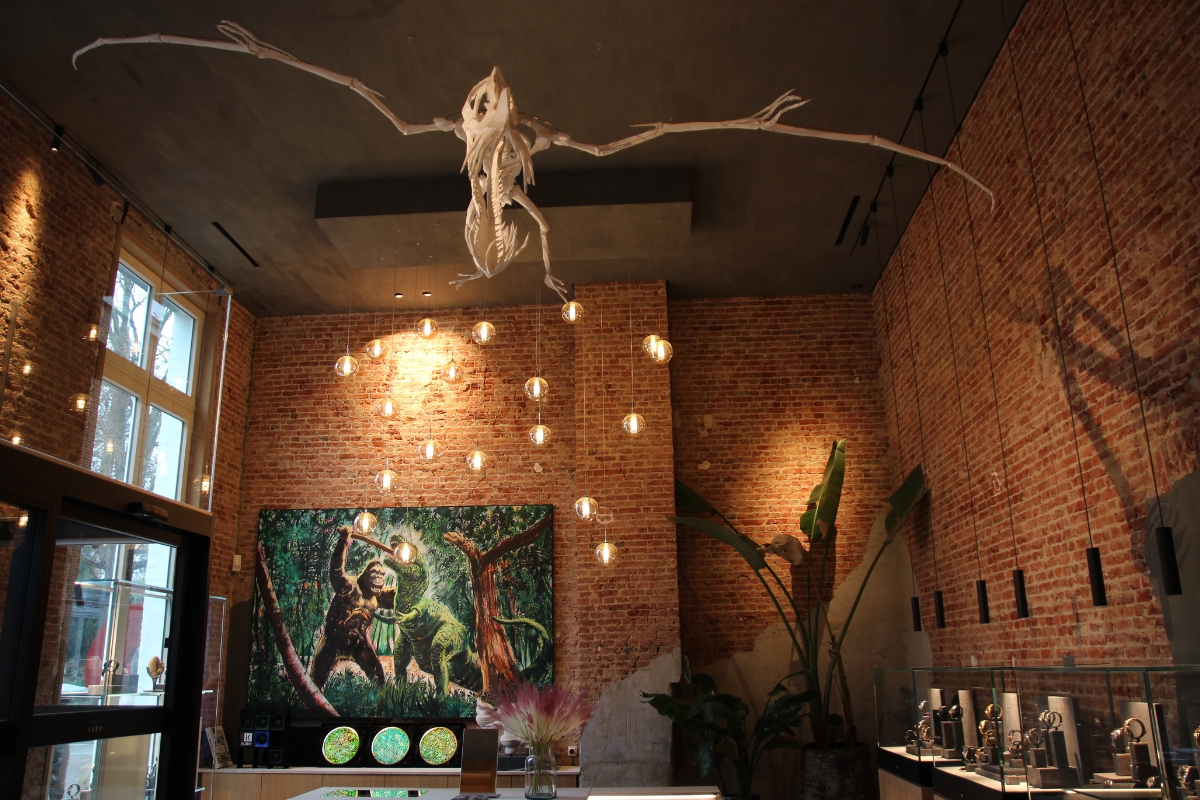
Stellar Spaces and Service
Event spaces range from intimate former monastery kitchens – one with a long table for 12 people and another including Delft blue and white tiles from the 18th century – to a large reception hall in the former 15th century hospital wing. The hall is stunning with a row of restored columns, original black flooring and a pastor oratory-gone-DJ-booth.
The 15th century chapel, now used for events, was beautifully restored to let its stained glass windows and functioning organ shine. (People were once buried underneath it but moved so revellers above would not disturb them!) The Botanic Sanctuary also has its own wine cellar called the Vinarium, where tastings and small events can be held. Underground hallways connect all main buildings of the hotel, except for the Michelin-starred restaurants. Special annual events include the Botanic Royal Ball in November and a masquerade ball and Valentine’s dinner in February.
The Botanic Sanctuary’s five-star superior rating comes from its personalised service, which is based on data that guests provide. It has a special guest program, turn-down service, magazine and series of books made just for the hotel. “We have a profile of every guest where we store information [from] employees interacting with the guest … for example, on which side of the bed they sleep,” says Hirt.
“With the botanic [theme] and monastery heritage that we have [plus] culinary offering, health club, meeting facilities and story behind everything here, this property is just fantastic,” he concludes. “We are already on par with high-end luxury hotels [and] even a notch on top.”
Image credits: Hertog Jan, Chef Gert De Mangaleer & Maitre Sommelier Joachim Boudens by Pieter D'Hoop.
All others by the author Angela Dansby, a Brussels-based, freelance lifestyle journalist.
Read Next
Top Chef Rasmus Munk Mixes Gastronomy with Social Impact at Alchemist in Copenhagen
How Chef Eric Ripert Makes Le Bernardin Top of La Liste
The Wandering Chef: Traversing the Globe with David Myers

